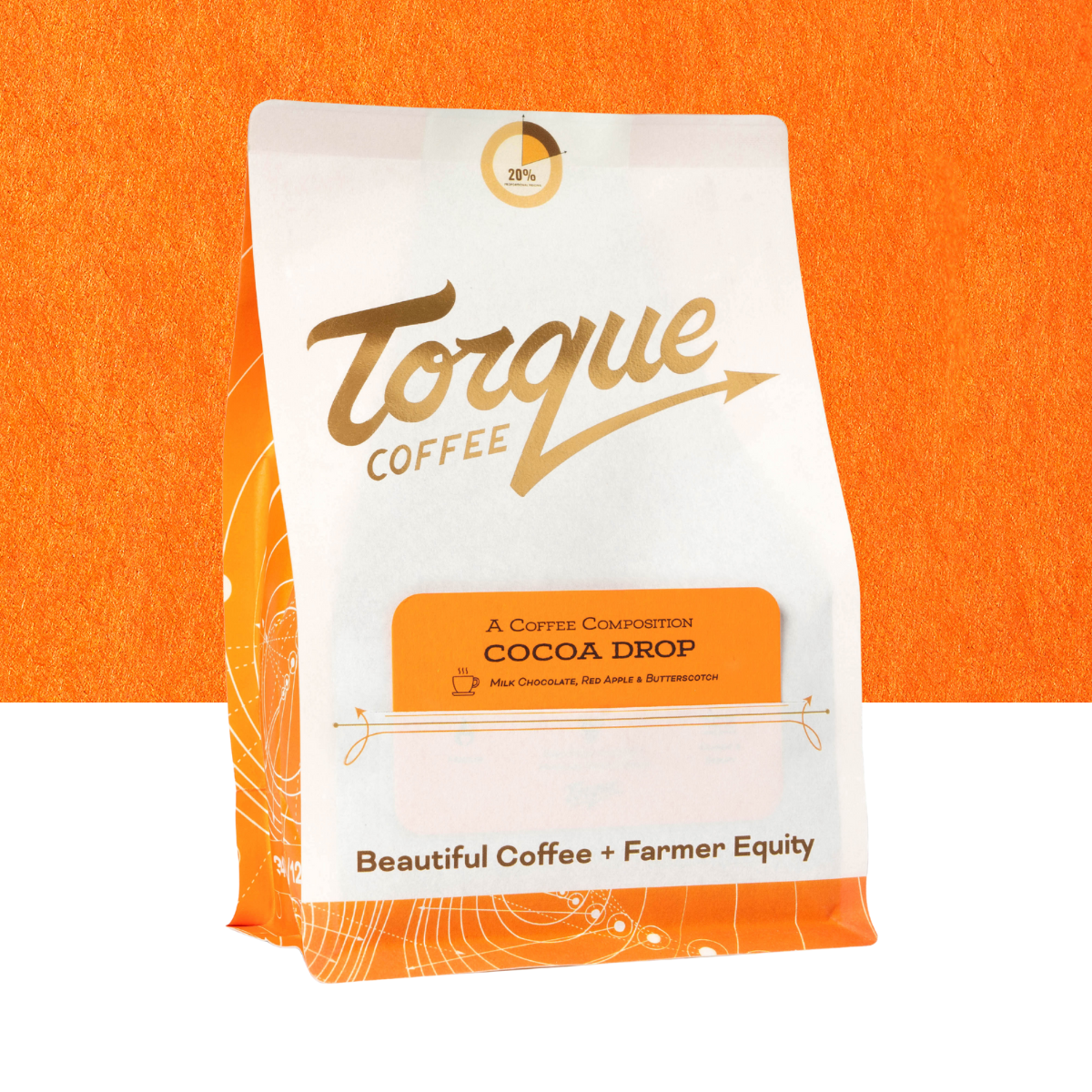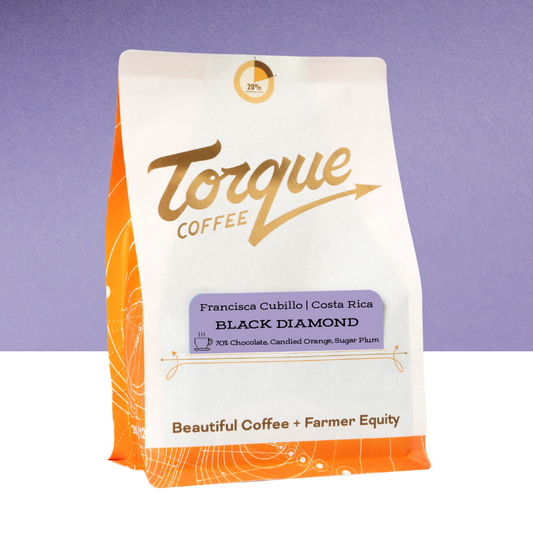
The Three Stages of Coffee Roasting: The Science & Craft Behind Exceptional Flavors
Roasting coffee is a delicate balance of science and craft, where every second and every degree influences the final cup. A skilled roaster—like Nanelle, Torque Coffees' head roaster—meticulously fine-tunes each roast profile to highlight the best flavors in every bean.
The roasting process is generally broken down into three key stages, each contributing uniquely to flavor development. Managing their ratios, total roast time, and temperature progression determines whether a coffee is bright and complex, deep and chocolatey, or dull and lifeless.
---
1. The Drying Phase (30-45% of Total Roast Time)
What Happens in This Stage?
- Begins at charge temperature (usually 375–420°F / 190–215°C) when green coffee enters the drum.
- Evaporation of moisture (green beans contain 8-12% water).
- Beans turn from green to pale yellow as Maillard reactions begin to activate.
- Internal bean temperature rises from room temperature to ~300°F (150°C).
Impact on Flavor:
✅ Positive:
- Proper drying ensures smooth heat transfer into the bean’s core, preventing underdevelopment.
- A steady, controlled ramp allows for better caramelization later in the roast.
❌ Negative:
- Too short? The exterior heats too fast while the core remains raw, causing sour, grassy flavors.
- Too long? The roast loses energy, leading to flat, baked coffee with muted acidity.
💡 Torque Coffees’ Approach:
Nanelle carefully adjusts charge temperature based on bean density and moisture. Lighter, denser beans (like Ethiopian heirlooms) need higher charge temps (~410–420°F) to ensure even drying, while lower-density coffees (like Brazilian naturals) require a gentler start (~385°F) to avoid scorching.
---
2. The Maillard Reaction Phase (35-45% of Total Roast Time)
What Happens in This Stage?
- Begins around 300°F (150°C) and lasts until first crack (~385-400°F / 196-204°C).
- Sugars caramelize, proteins break down, and hundreds of new aromatic compounds form.
- Color shifts from yellow to tan to rich brown.
- Acid development peaks, influencing brightness and complexity.
Impact on Flavor:
✅ Positive:
- A well-balanced Maillard phase enhances sweetness and complexity (think caramel, honey, and chocolate notes).
- Properly managed heat ensures a balanced acidity-to-sweetness ratio.
❌ Negative:
- Too short? The coffee lacks depth, tasting thin, sharp, or overly acidic.
- Too long? Acidity and fruitiness diminish, resulting in a dull or overly roasty profile.
💡 Torque Coffees’ Approach:
Using Cropster and sensory feedback, Nanelle precisely controls rate of rise (RoR) to avoid crashing while maximizing sugar caramelization. By slightly extending this phase for washed Central American coffees, she enhances their chocolate-like body while preserving bright fruit notes. Think Espresso Centenario.
---
3. The Development Phase (Post-First Crack) (15-25% of Total Roast Time)
What Happens in This Stage?
- Begins when beans audibly "pop" (first crack) as internal pressure releases steam.
- Rapid expansion of cellular structure.
- The final moments where body, sweetness, and roast level are finalized.
- Ends at the final roast temperature (~400-430°F / 204-221°C).
Impact on Flavor:
✅ Positive:
- Shorter development (15-18%) preserves acidity and fruit-forward brightness.
- Longer development (20-25%) enhances body and deep caramelization.
❌ Negative:
- Too short? The roast stops before flavors are fully developed, causing sour, vegetal notes.
- Too long? Over-roasted flavors appear, muting origin character and leading to ashy, bitter, or flat coffee.
💡 Torque Coffees’ Approach:
Nanelle fine-tunes end temperature and development time based on bean type. For a juicy Ethiopian natural, she keeps development closer to 12-15% to preserve its delicate florals. For a lower elevation Veracruz or Honduran coffee, she can extend it to 18-25% to maximize chocolate and spice notes.
---
Balancing the Three Phases: The Art & Science of Roasting
A well-balanced roast profile is the key to unlocking the full potential of a coffee.
- Shorter total roast time (~8-10 min) → Brighter, more acidic, tea-like flavors.
- Longer total roast time (~11-13 min) → Richer, fuller-bodied, chocolatey flavors.
- Development time ratio of 15-20% → Ideal for balancing acidity, sweetness, and complexity.
⚖️ The key? Precision & control. Nanelle at Torque Coffees doesn’t rely on automation alone—she applies deep sensory expertise, adjusting profiles by hand and by science to bring out the absolute best in every batch.
---
Roasting : Where Science Meets Craft
Coffee roasting is a blend of chemistry, physics, and sensory intuition. While software like Cropster and theories from Scott Rao and Rob Hoos help refine techniques, it’s ultimately the roaster’s expertise that makes the difference.
At Torque Coffees, Nanelle’s mastery of heat, time, and development balance ensures that every batch delivers the brightest, most complex, and deeply satisfying flavors possible. 🔥☕









